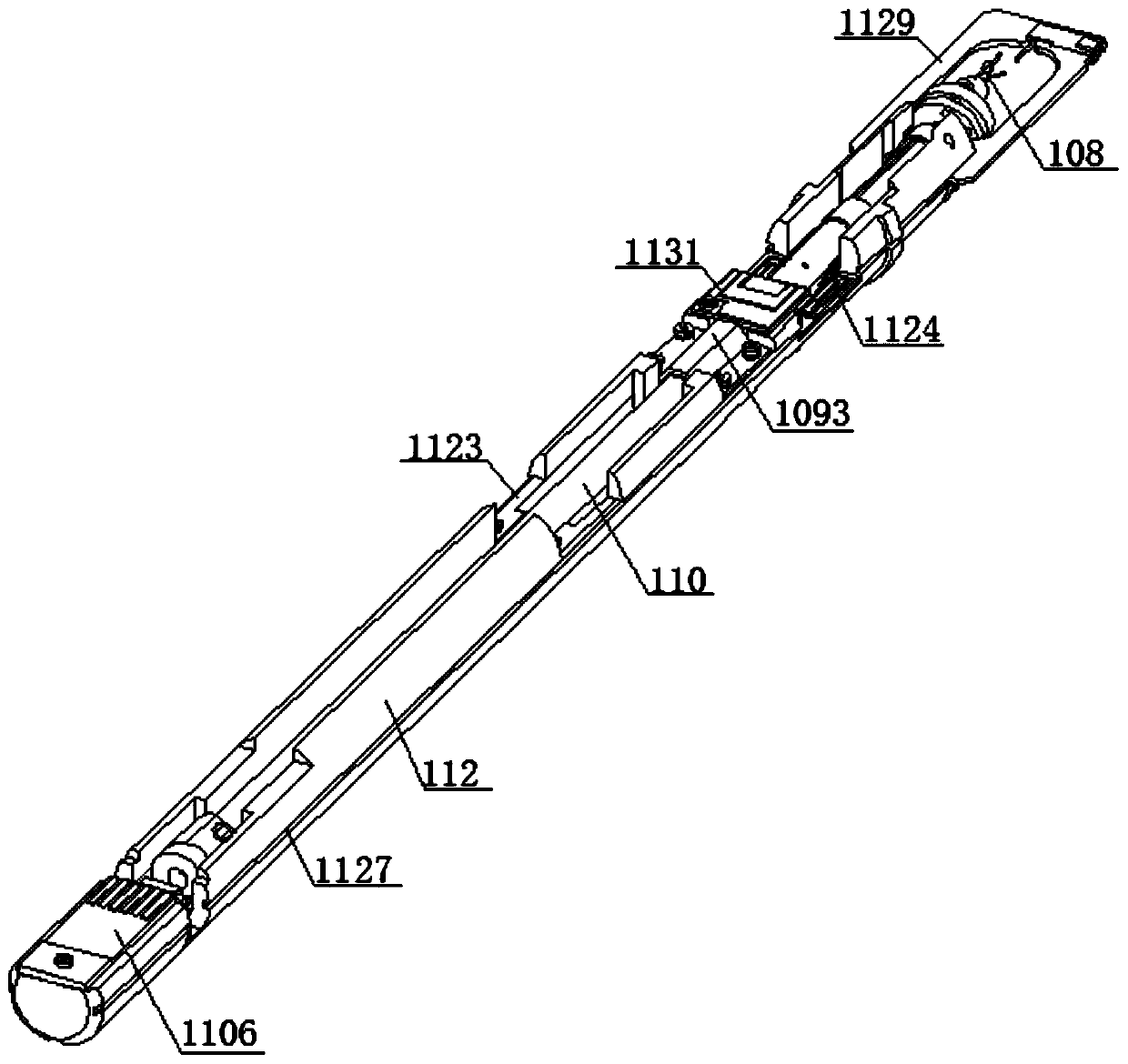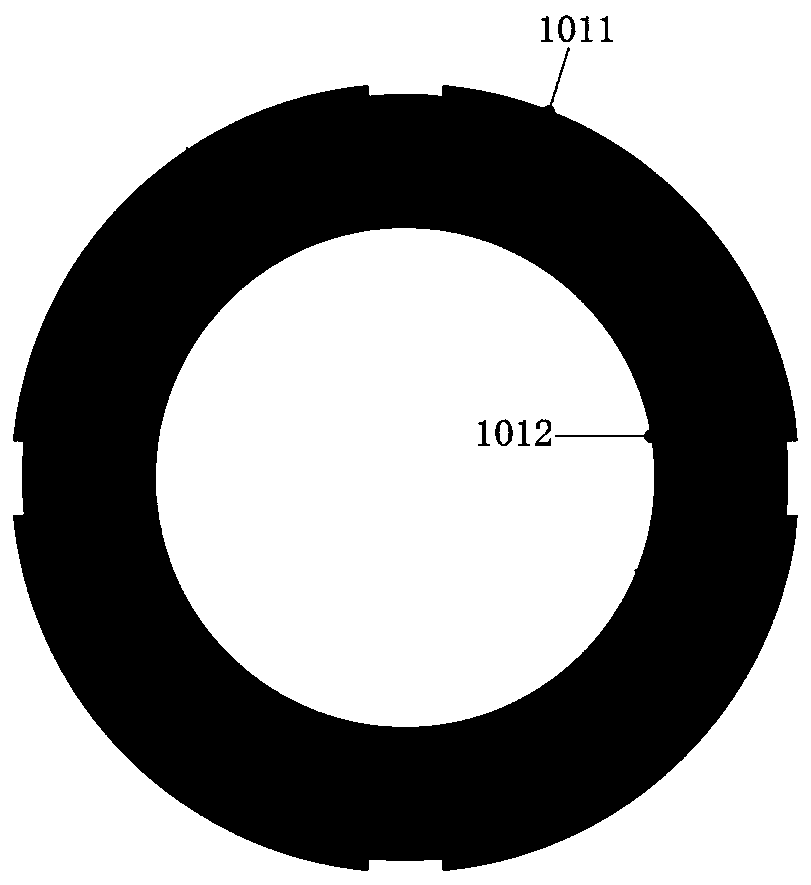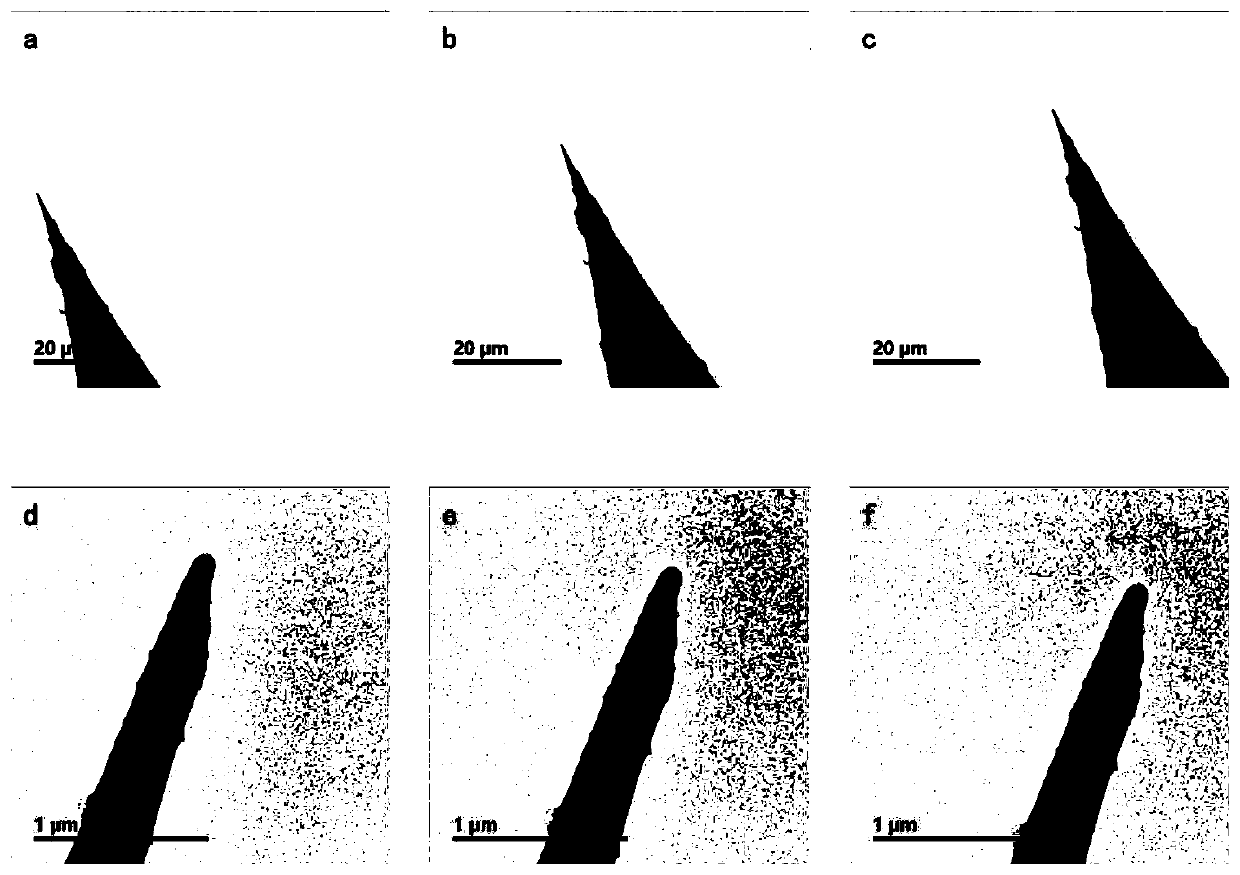Multi-degree-of-freedom sample rod with self-positioning function
A technology of self-positioning and degree of freedom, applied in the field of sample rods, can solve problems such as easy deformation of flexible claws, inability to grasp small balls, and inability to ensure the consistency of flexible claws, etc., and achieve the effect of reducing design and manufacturing requirements
- Summary
- Abstract
- Description
- Claims
- Application Information
AI Technical Summary
Problems solved by technology
Method used
Image
Examples
Embodiment Construction
[0166] figure 1 It is a sample rod with multiple degrees of freedom. Such as figure 2 As shown, the sample rod is provided with a nanopositioner. The nanopositioner includes a driving part 101, an articulating ball 103 and a pressing part assembly. The joint ball 103 is fixed to the driving part 101. The pressing part assembly includes at least two pressing parts 105 and an elastic connection. The component 104, the elastic connecting component 104 connects the adjacent pressing pieces, the pressing piece assembly embraces the joint ball 103, and there is a pre-tightening force between the pressing piece and the joint ball 103. For example, a piezoelectric ceramic tube is used as the driving part 101.
[0167] Pressure piece
[0168] In some embodiments, such as figure 2 As shown, each pressing piece has a concave portion 1051 and a connecting portion 1052, respectively. The elastic connecting component 104 is arranged between the connecting portions 1052 of adjacent pressing pi...
PUM
 Login to View More
Login to View More Abstract
Description
Claims
Application Information
 Login to View More
Login to View More - Generate Ideas
- Intellectual Property
- Life Sciences
- Materials
- Tech Scout
- Unparalleled Data Quality
- Higher Quality Content
- 60% Fewer Hallucinations
Browse by: Latest US Patents, China's latest patents, Technical Efficacy Thesaurus, Application Domain, Technology Topic, Popular Technical Reports.
© 2025 PatSnap. All rights reserved.Legal|Privacy policy|Modern Slavery Act Transparency Statement|Sitemap|About US| Contact US: help@patsnap.com



